17th century ambassador who set standards for modern statecraft
 |
| Cardinal Guido Bentivoglio, as painted in 1623 by the Flemish artist, Anthony van Dyck |
Born in 1579 in Ferrara, Bentivoglio’s life was notable for having helped reset the Vatican’s approach to international relations, both through his astute and pragmatic methodology and his influential writings.
His most notable written work, Della Guerra di Fiandra, is regarded as setting a new standard for historical writing. Published in multiple volumes between 1632 and 1639, it documented in great detail what Bentivoglio had learned from his eight years as papal nuncio in Flanders after decades of civil war between Habsburg rebels and the region’s Spanish rulers.
Bentivoglio’s blend of political acumen and ecclesiastical authority, enabling him to navigate the religious and political tensions of a region divided between Catholic and Protestant powers, came to the fore during this time.
Della Guerra di Fiandra and his earlier work, Relazioni in tempo delle sue nunziature, provided observations of his terms as papal nuncio in both Flanders and France. They became points of reference for historians and diplomats for many years to come and added considerably to the understanding of European politics.
Ironically, given his reputation for enlightened moderation, Bentivoglio is also remembered as having been a member of the panel of cardinals who in 1633 condemned the scientist Galileo Galilei to be burned at the stake - a sentence later commuted to indefinite house arrest - after the Inquisition had found him guilty of heresy.
Born on September 4, 1579, Bentivoglio hailed from the Ferrara branch of the influential Bentivoglio family of Bologna, the younger son of the marchese, Cornelio Bentivoglio. His upbringing was steeped in humanist education, preparing him for a life of ecclesiastical service and cultural sophistication.
 |
| A Spanish edition of Bentivoglio's seminal work, The War in Flanders |
Bentivoglio attended university in Ferrara and Padua, where in 1598 he received a doctorate in both civil and canon law. During his time in Padua, it is thought Bentivoglio attended mathematics lessons in which, somewhat ironically, his tutor was Galileo, who was a professor at the University of Padua between 1592 and 1610.
After completing his doctorate, Bentivoglio returned to Ferrara, where he met Pope Clement VIII, who was visiting the city. Clement saw in him an individual of enormous potential and asked him to return to Rome with him as his private chamberlain.
Clement VIII died in 1605 but his successor, Pope Paul V, was similarly impressed with Bentivoglio and appointed him titular archbishop of Rhodes in May 1607, despite not having yet received the sacred orders. The appointment was to give him appropriate credentials to be nuncio at the court of the Archdukes Albert and Isabella in the Netherlands, a position to which he was appointed a month later.
After nine years in Flanders, Bentivoglio was transferred to Paris as nuncio in France, where he witnessed the volatile regency of Marie de’ Medici, the supposed assassination of the powerful Italian-born politician Concino Concini, and the rise of Louis XIII. His reports provided Rome a clear-eyed view of French politics, balancing ecclesiastical interests with diplomatic realism.
In both positions, in Flanders and France, Bentivoglio’s style was marked by restraint, observation, and cultural sensitivity. He navigated Protestant-Catholic tensions with tact, often prioritizing long-term influence over short-term victories.
Elevated to cardinal by Pope Gregory XV, Bentivoglio became Protector of France at the Vatican, a role that positioned him as a key intermediary between the French crown and the Holy See and which he kept from 1621 to 1641.
 |
| The Inquisition hearing in 1633 that found the great scientist, Galileo Galilei, guilty of heresy |
Particularly enthusiastic about supporting northern European artists working in Rome, he commissioned Van Dyck to paint his portrait, while his portrait bust was sculpted by François Duquesnoy, known as Il Fiammingo, a Flemish sculptor active in Rome.
In the middle of this period came his part in the condemnation of Galileo, who was found guilty of heresy for writing a book that supported the view - for which, he claimed, there was scientific proof - that the sun rather than the earth was the centre of the solar system, as had been put forward by the Polish scientist Nicolaus Copernicus. In orthodox Roman Catholic doctrine, it was regarded as an indisputable fact of scripture that the opposite was true, that the sun moved around the earth.
In a later collection of his works, Memorie, Bentivoglio expressed sympathy for Galileo's plight, brought on "all by his own fault, for having wanted to bring into print the new opinions about the motion of the Earth against the true accepted sense of the Church".
It seems possible, given the Catholic Church’s struggle with emerging science, that Bentivoglio was torn between his intellectual leanings and his institutional loyalties. Nonetheless, his signature was on the decree.
Some may be tempted to believe, though, that Bentivoglio might have been an influence in the comparative leniency extended to Galileo.
The astronomer, mathematician, philosopher and engineer – often described as ‘the father of modern science’ - could have been burned at the stake but was given the option of life imprisonment provided he recanted his findings as “abjured, cursed and detested”, to which he agreed with great reluctance.
The following day, his sentence of imprisonment was commuted to house arrest, after which Galileo was allowed to live at his villa at Arcetri, near Florence, for the remaining nine years of his life.
 |
| The 14th century Estense Castle dominates the central part of the city of Ferrara |
Bentivoglio’s home city of Ferrara, about 50 km (31 miles) northeast of Bologna, was ruled by the Este family between 1240 and 1598. Building work on the magnificent Estense Castle in the centre of the city began in 1385 and it was added to and improved by successive rulers of Ferrara until the end of the Este line. The castle was purchased for 70,000 lire by the province of Ferrara in 1874 to be used as the headquarters of the Prefecture. Ferrara is also notable for Palazzo dei Diamanti, a palace in Corso Ercole I d’Este, that takes its name from the 8500 pointed diamond shaped stones that stud the façade, diamonds being an emblem of the Este family. It was designed by Biagio Rossetti and completed in 1503. The palace now houses the Pinacoteca Nazionale di Ferrara on its first floor.
Find a hotel in Ferrara
 |
| The anatomical theatre at the University of Padua attracts curious visitors |
The founding of the University of Padua is officially recorded to have taken place in 1222 but this was actually the first time it was mentioned in an historical document, which means it is certainly older. Only the University of Bologna, founded in 1088, is older. Padua’s university was formed, in fact, when a large group of students and professors left the University of Bologna in search of more academic freedom. The first subjects to be taught were law and theology. The main university building, Palazzo del Bò in Via VIII Febbraio in the centre of Padua, used to house the medical faculty. You can take a guided tour to see the lectern used by Galileo when he taught at the university between 1592 and 1610. The university buildings also house nine museums, a botanical garden and the oldest surviving permanent anatomical theatre in Europe, built in around 1595 and which used to hold public dissections, which attracted scientists and artists in large numbers, keen to enhance their knowledge of the human body.
Search places to stay in Padua
More reading:
What led Galileo Galilei to be convicted of heresy by the Catholic Church
How Scipione Borghese, nephew of Pope Paul V, used his position to acquire wealth to buy art
Pope Gregory XV, the last pontiff to issue a papal ordinance against witchcraft
Also on this day:
1303: Pope Boniface VIII captured by King Philip IV of France
1791: The birth of poet Giuseppe Gioachino Belli
1893: The founding in Genoa of Italy’s oldest surviving football club




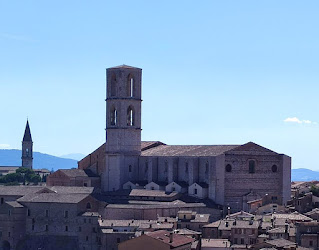

_Pope_Gregory_XII_-_Museo_Correr.jpg)














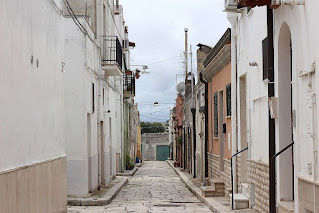
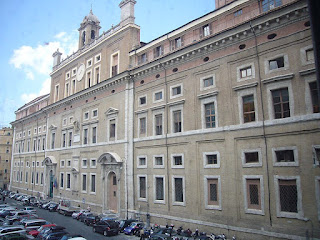
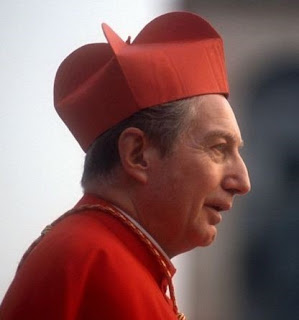

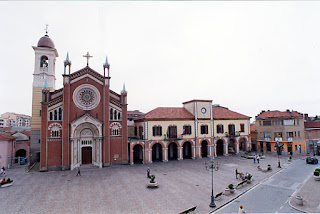
%2016,%20villa%20Rodolfo%20Mauri%20(Carlo%20Moroni%20con%20Filippo%20Tenconi)%20(2).jpg)
.jpg)


_-_2021-08-29_-_1%20(2).jpg)